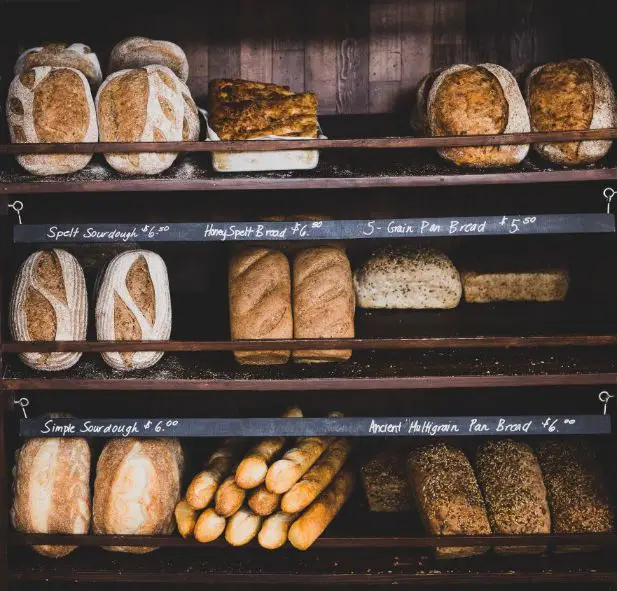Baking bread is a time-honored tradition that brings joy to many.
However, it’s crucial to understand the role of each ingredient in the bread-making process. One ingredient that requires careful consideration is sugar.
In this article, we will explore what happens if you put too much sugar in bread dough and provide 5 effective ways to fix it.
So, whether you’re a baking enthusiast or a novice, this information will help you create bread that is both delicious and satisfying.
What Happens if You Put Too Much Sugar in Bread Dough
If you put too much sugar in bread dough, it can have several effects on the dough and the final bread product.
Here are the 5 most common possible outcomes:
1. Slower Yeast Activity
Yeast plays a crucial role in the process of dough rising by feeding on sugar and producing carbon dioxide.
However, it’s important to note that an excessive amount of sugar can actually have a negative impact on yeast activity.
This is because high concentrations of sugar can cause the yeast to become dehydrated, which in turn reduces its overall activity level.
When the yeast is dehydrated, it becomes less efficient at producing carbon dioxide, leading to a slower or even incomplete rise of the dough.
The yeast’s ability to generate enough carbon dioxide gas is crucial for achieving the desired volume and texture in the final baked product.
2. Browning and Caramelization
Sugar plays a key role in the browning and caramelization process during baking.
When exposed to high heat, sugar molecules undergo a chemical reaction known as the Maillard reaction.
This reaction results in the formation of desirable flavors and the characteristic golden-brown color on the surface of baked goods.
However, it’s important to exercise caution when adding sugar to bread recipes, as too much sugar can cause the bread to brown too quickly or excessively.
This can lead to a darker crust or even burnt edges, compromising the overall taste and appearance of the bread.
3. Texture and Moisture
Sugar possesses hygroscopic properties, meaning it has the ability to attract and retain moisture.
When added to bread dough, sugar can impact its texture and moisture content.
Too much sugar can make the bread denser and more tender. The excess sugar attracts and holds onto moisture, resulting in a more moist and sticky texture.
While some recipes may call for a certain level of moisture and tenderness.
It’s important to strike a balance and avoid adding too much sugar, as it can negatively affect the desired texture of the bread.
4. Flavor Imbalance
When making bread dough, it is important to achieve a harmonious balance of flavors.
This balance typically includes the natural sweetness of wheat, along with the savory nuances contributed by yeast and salt.

However, if too much sugar is added to the dough, it can disrupt this delicate equilibrium.
The overpowering sweetness of the sugar can dominate the overall flavor profile of the bread, potentially overshadowing or masking the other desirable flavors present.
This can result in bread that tastes excessively sweet and fails to showcase the subtle complexities of its ingredients.
5. Reduced Shelf Life
Sugar plays a dual role in the shelf life of baked goods. On one hand, it acts as a preservative by attracting and retaining moisture.
This moisture retention helps prevent the bread from drying out too quickly, thus prolonging its shelf life.

However, when sugar is added in excessive amounts, it creates an environment that favors the growth of microorganisms.
These microbes can include mold, yeast, and bacteria, which thrive in environments rich in sugar and moisture.
As a result, overly sugary bread becomes more susceptible to microbial contamination, leading to a shorter overall shelf life.
How to Fix Too Much Sugar in Bread Dough
If you’ve accidentally added too much sugar to your bread dough, there are a few steps you can take to try to balance the sweetness and salvage the dough.
Here’s what you can do:
1. Increase the Other Ingredients
To reduce the sweetness of dough, one effective approach is to increase the number of other ingredients while keeping the sugar content constant.
This method involves doubling the entire recipe, excluding the sugar, to maintain the original ingredient ratios.

By doing so, the overall sweetness is diluted throughout the dough, resulting in a more balanced flavor profile.
By increasing the other ingredients in the dough, such as flour, eggs, butter, or flavorings, you achieve a larger quantity of dough while maintaining the same amount of sugar as in the original recipe.
This adjustment helps distribute the flavors more evenly, preventing an overpowering sweetness that could otherwise dominate the taste.
The increased proportions of the other ingredients work together to create a harmonious blend, ensuring that the sweetness is not overly pronounced
2. Amplify With Additional Flour
Another approach to mitigating the sweetness in your bread dough is to gradually incorporate small amounts of flour while kneading the dough.
This technique aids in absorbing some of the excess sugar and thereby restoring balance to the flavor profile.
By adding the flour incrementally, you can carefully control the consistency of the dough, ensuring it reaches the desired texture without compromising its structural integrity.
This step-by-step incorporation of flour allows you to adjust the sweetness level according to your preference, ultimately resulting in a more satisfying taste.
3. Infuse Savory Ingredients
Introducing savory components to your bread dough can be an excellent way to counterbalance its inherent sweetness.
By incorporating flavorful herbs such as rosemary, thyme, or oregano, you not only infuse delightful aromas but also create a contrast that diminishes the perception of too much sugar.
These aromatic herbs provide a savory depth that complements the bread’s overall taste, offering a more complex and well-rounded flavor experience.
Alternatively, you may consider incorporating ingredients like grated cheese or minced garlic, which not only add savory elements but also introduce their own distinct flavors.
These savory additions serve to mask the sweetness to some extent, resulting in a more balanced and satisfying bread.
4. Add Acid
Incorporating acidic ingredients such as freshly squeezed lemon juice or vinegar into your dough can be a fantastic way to achieve a delightful balance between sweetness and tartness.
By adding a small amount at a time, you have the opportunity to fine-tune the flavor according to your preference.

It’s important to be cautious, though, as too much acid can potentially alter the texture of the dough.
Therefore, it’s advisable to gradually add acid and frequently taste the dough as you progress to ensure you achieve the desired taste without compromising the dough’s consistency.
5. Let the Dough Rest
If you find yourself with some extra time on your hands, allowing the dough to rest for an extended period before baking can yield even more favorable results.
During this resting period, the yeast present in the dough continues to ferment and consume some of the excess sugar.
As a result, the final product becomes less sweet, showcasing a more nuanced and well-balanced flavor profile.
Too Much Sugar in Bread Dough – Conclusion
In conclusion, too much sugar in bread dough can slow down yeast activity, and cause excessive browning.
Impact texture and moisture, disrupt flavor balance, and reduce shelf life.
To fix it, increase other ingredients, add flour gradually, infuse savory elements, incorporate acidity, or let the dough rest.
These steps help balance sweetness and enhance the overall taste of the bread.

